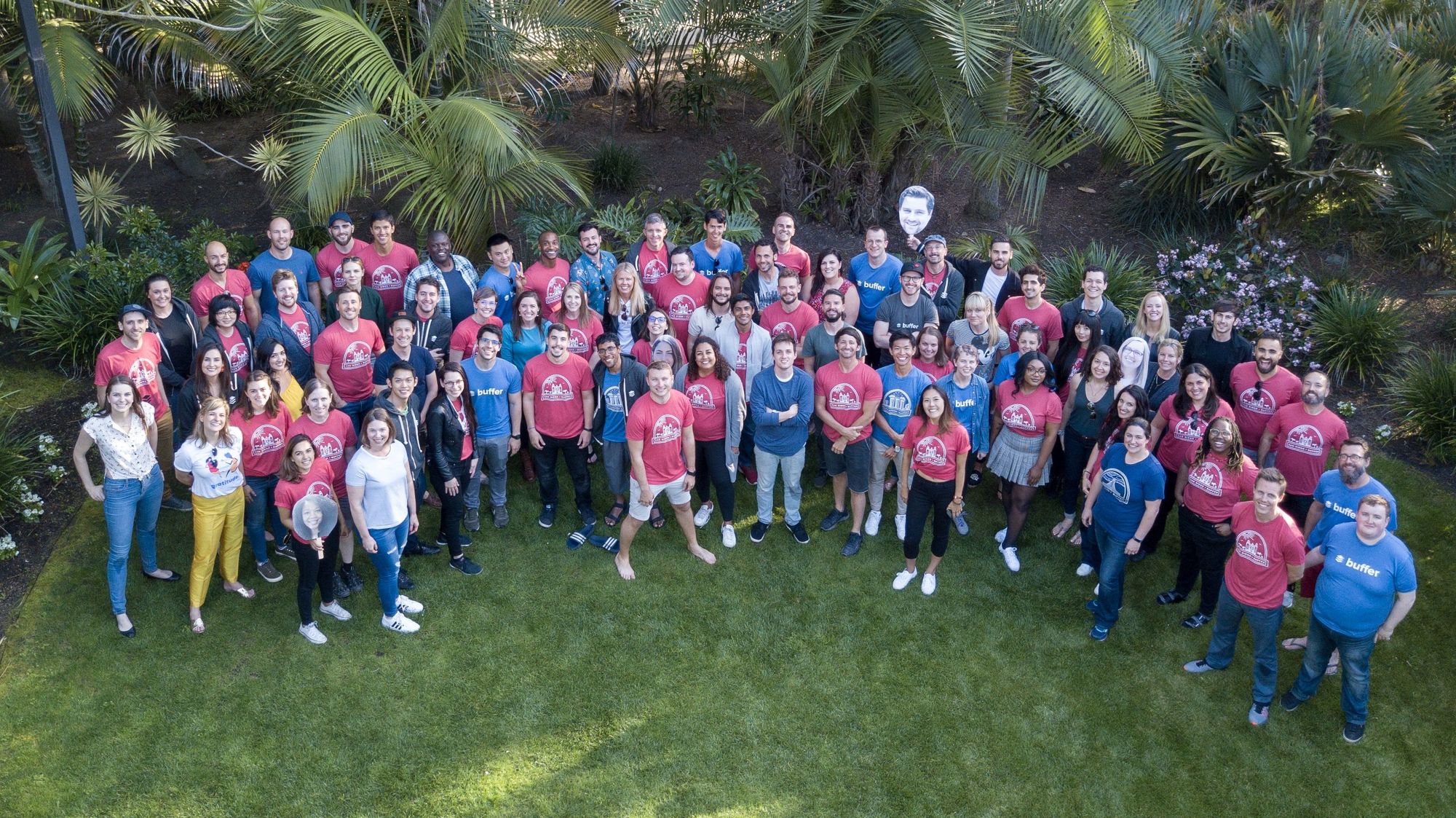
The Buffer Team Retreat Over Time: Here’s Every Retreat So Far

Former Director of People @ Buffer
We’re a fully remote team at Buffer, so we’re used to connecting with one another via video, chat, and other collaborative, remote work tools.
Working this way is a lot of fun—and it means the times we get to spend together, all in the same place, are extra special.
Not only do team retreats give us a full week to work (and play) together as a team, they also give us some time all together to reflect on the future of retreats as we continue to grow. (Our open roles are listed here.)
So far, the team has been to:
- Lake Tahoe, California
- Thailand
- Cape Town, South Africa
- New York, New York
- Sydney, Australia
- Reykjavik, Iceland
- Honolulu, Hawaii
- Madrid, Spain
- Singapore
- San Diego
In a way, every retreat is a new chapter in the Buffer story.
In this post, we’ll share some of the details behind each retreat up to this point, as well as how the retreat has evolved and where we think it could be going in the future.
Retreat #1: Lake Tahoe, California
August, 2013
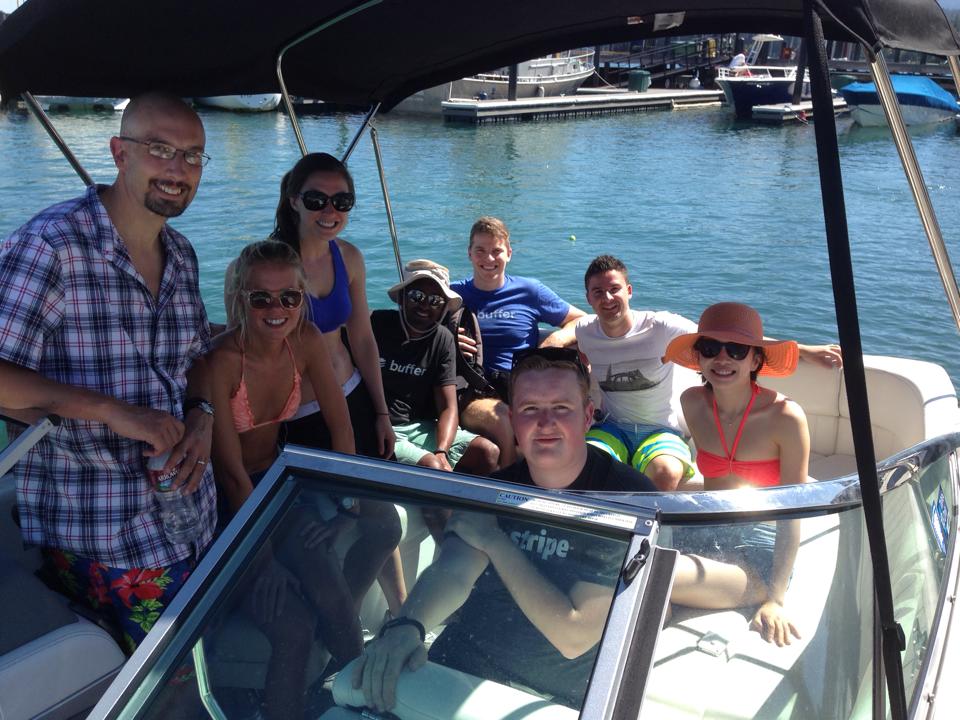
Team members: 8
The first official Buffer retreat took place in San Francisco, with a bit of time in Lake Tahoe. It was strongly focused on team bonding and activities, with a bit less emphasis on working together.
At that time, the team had made the decision to have retreats every 4 months and bring the whole team to one awesome destination in the world.
Retreat #2: Bangkok, Thailand
November, 2013
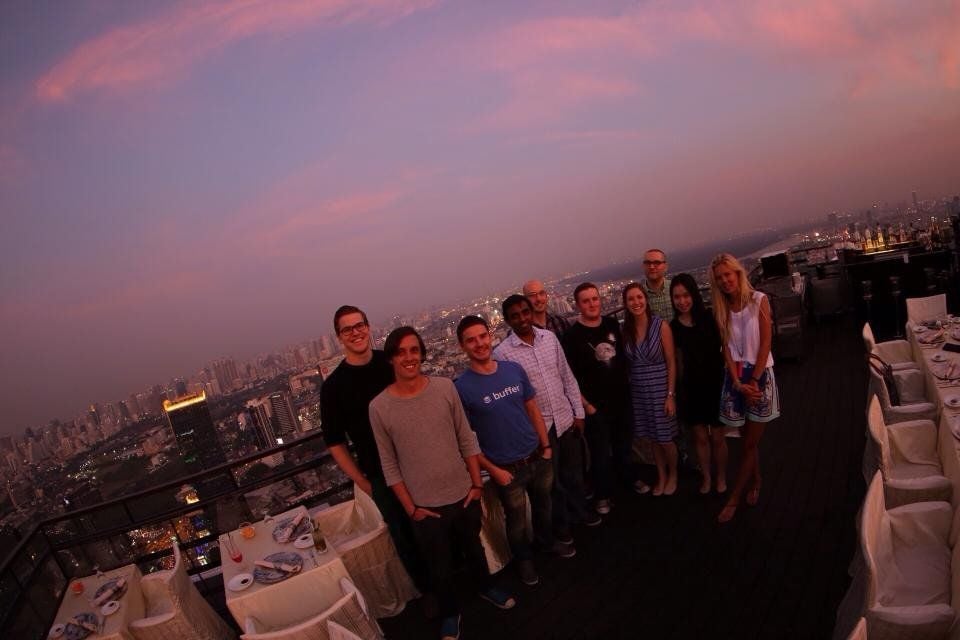
Team members: 11
Members of Buffer’s distributed team came from as far as the UK, Australia and different parts of the US to be together for a week in Thailand in November 2013, where they worked from a hotel in Bangkok and a villa in Pattaya City.
This retreat was much more work-oriented—in fact, the bulk of Buffer for Business was created during this week. (It also happened a month before the team made transparent all salaries.)
Thailand also laid out the general foundation of Buffer retreats to follow: A core week of work together mixed in with some fun bonding activities like team dinner and fun excursions.
Retreat #3: Cape Town, South Africa
April, 2014

Team members: 16
In the first week of April 2014, most of the Buffer team gathered in Cape Town. This was a chance for many new team members to meet for the first time, and for others to be reunited again for a week.
We lived and worked together in three villas in the beautiful Camps Bay area, and during the weekend we went on safari together.
In Cape Town, a new tradition was born: Joel and Leo relayed the story of Buffer (so far) to the full team. Now every retreat includes a get-together for all new team members to share Buffer’s past.
Additionally, the team made the decision in Cape Town to switch the retreat to every 5 months, with dates that would vary in order to accommodate more schedules with flexibility.
Retreat #4: New York, New York
September, 2014
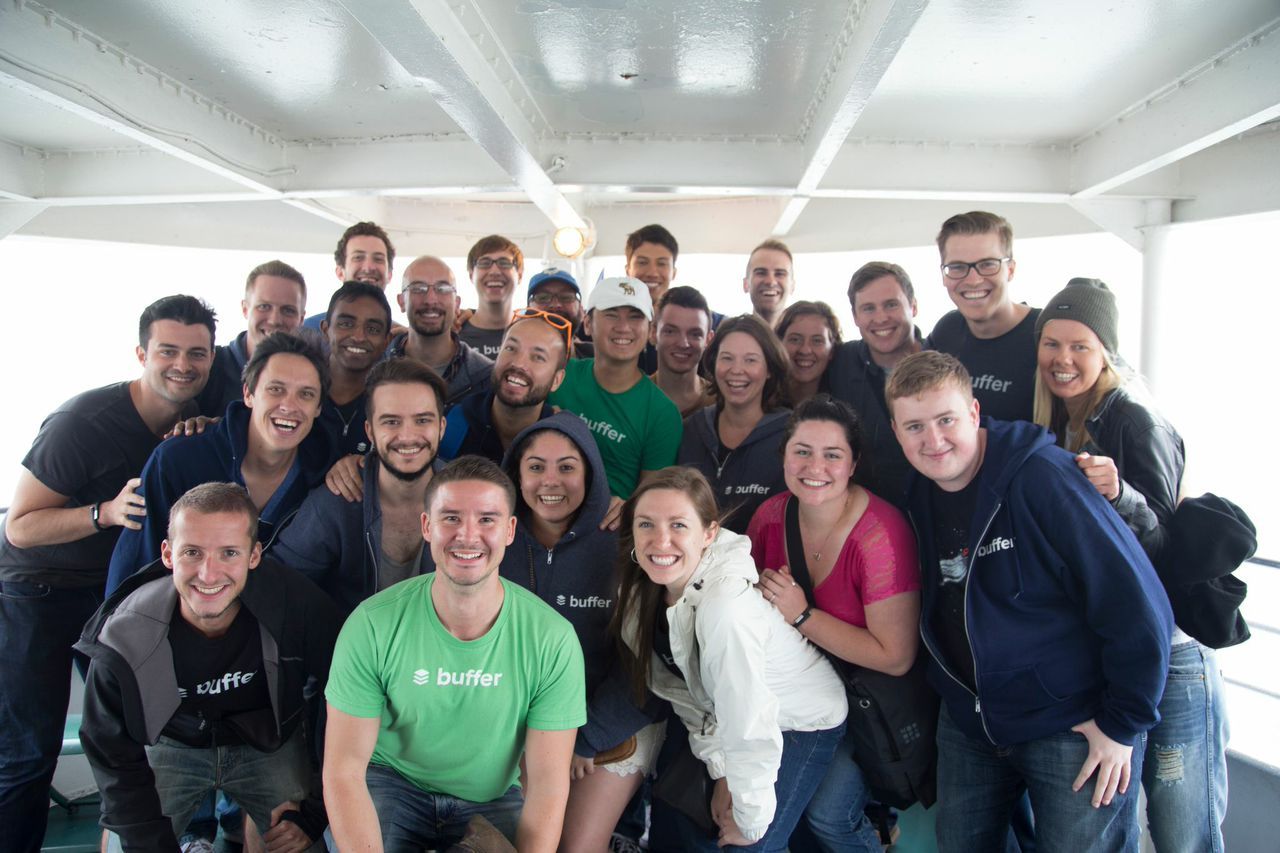
Team members: 25
By Retreat #4 in New York City, Buffer had grown in team size as well as expanded its work philosophies. Many of us had read The Decision Maker and Buffer was beginning to experiment with self-management.
This retreat was the first one to move the team from working in houses or hotels to working in a co-working space together, creating lots of new opportunities for projects with diverse groups across the team.
In New York we also returned to a Buffer tradition that got its start at Retreat #1: personal stories. In this exercise, small groups get together to listen to each individual tell their personal story—all the important elements that got them to where they are today. I’d love to write more about these in a future post, they’re really powerful!
Retreat #5: Sydney, Australia
February, 2015

Team members: 26
Retreat #5 in Sydney marked the dawn of self-management at Buffer. The retreat was self-organized, from destination to planning to the actual event.
As such, this was a bit of a different retreat. It was planned “un-conference style” in an homage to the barcamp tech conference. The agenda was wide open for any team member to plan and present a session of their choosing, and team members heard talks on everything from working while traveling to CSS and HTML.
In keeping with our pledge towards transparency, we followed up this retreat with an in-depth report on what we spent and how we spent it.
Retreat #6: Reykjavik, Iceland
July, 2015
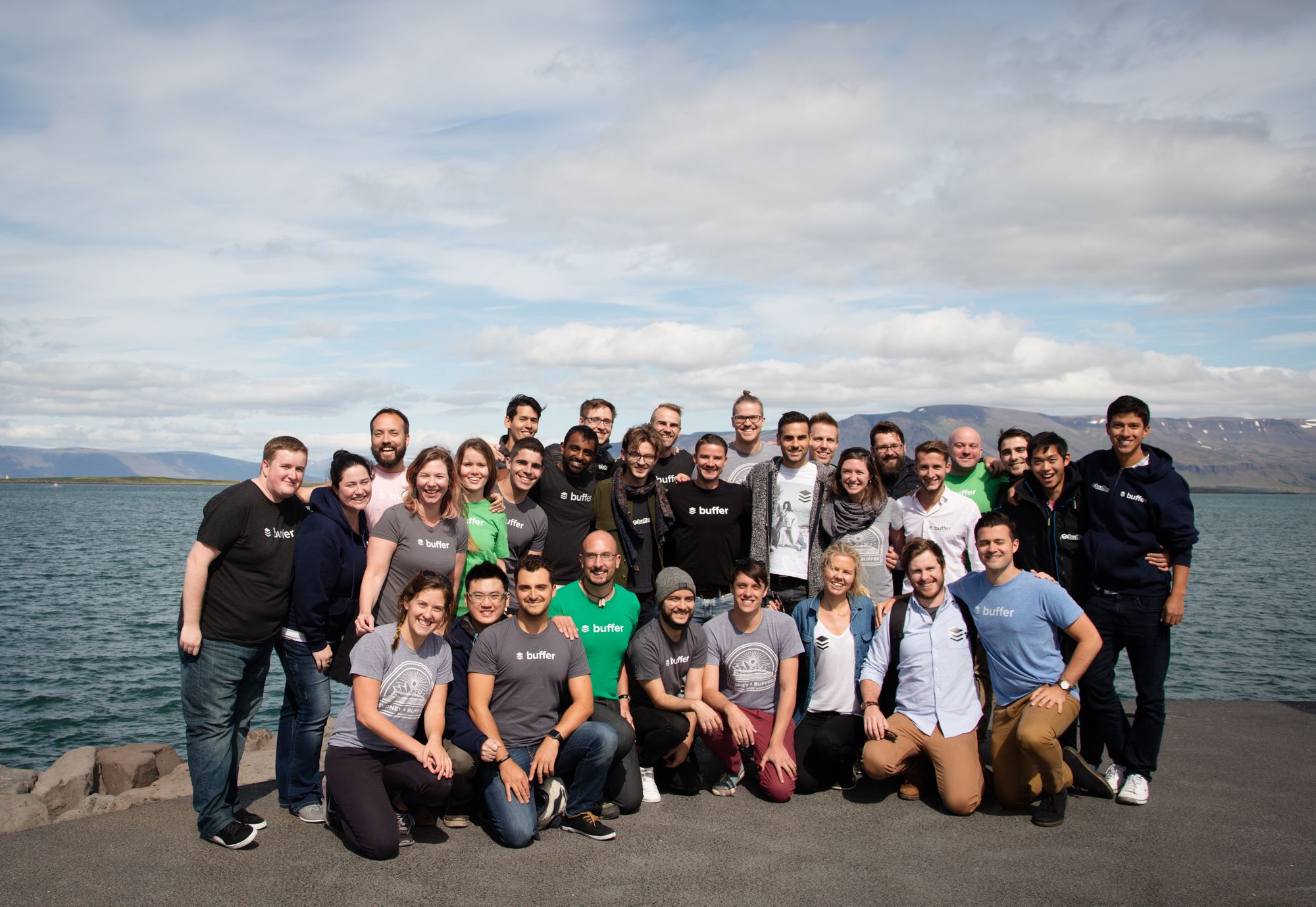
Team members: 31
Retreat #6 in Reykjavik wasn’t different just in that it was our first cold-weather destination—it was also the first retreat that Buffer opened up to spouses, partners and families by helping to cover some of the travel and housing costs.
Some of the changes we made included:
Flexible housing: Giving each teammate a choice on where they wish to stay. Solo travelers can have Buffer book their stay at a hotel, and families might choose an allowance to put toward an Airbnb house or other type accommodation.
Family boost: Offering a financial boost to help those who want to invite partners and dependents to the retreat. The boost dollar amount is 50% total accommodation costs for a retreat, to be spent however the teammate would like towards the retreat (flights, accommodation, activities…)
Having significant others created a really cool atmosphere that felt so in line with our mission of bringing our “authentic selves” to work. New friends also created more informal activities, from game nights and adventurous outings, that gave various small groups a chance to form and spend time together throughout the course of the week.
Here’s a video recap of the week:
Retreat #7: Honolulu, Hawaii
May 2016
Team members: 60
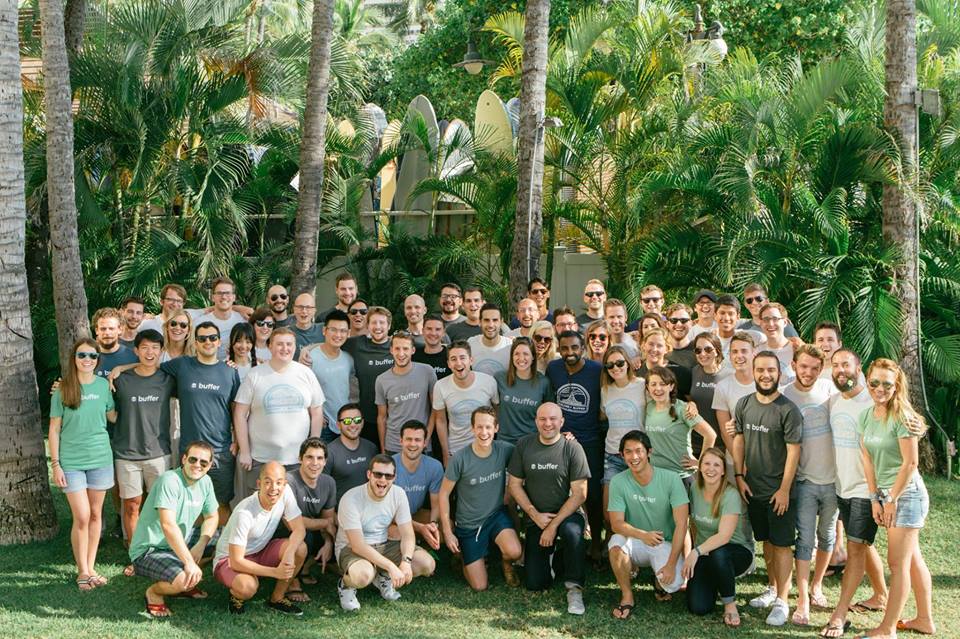
Beautiful Hawaii brought with it the option of having a hotel and workspace in one location, a model that we’ve enjoyed a lot since then.
Retreat #8: Madrid, Spain
February 2017
Teammates: 71
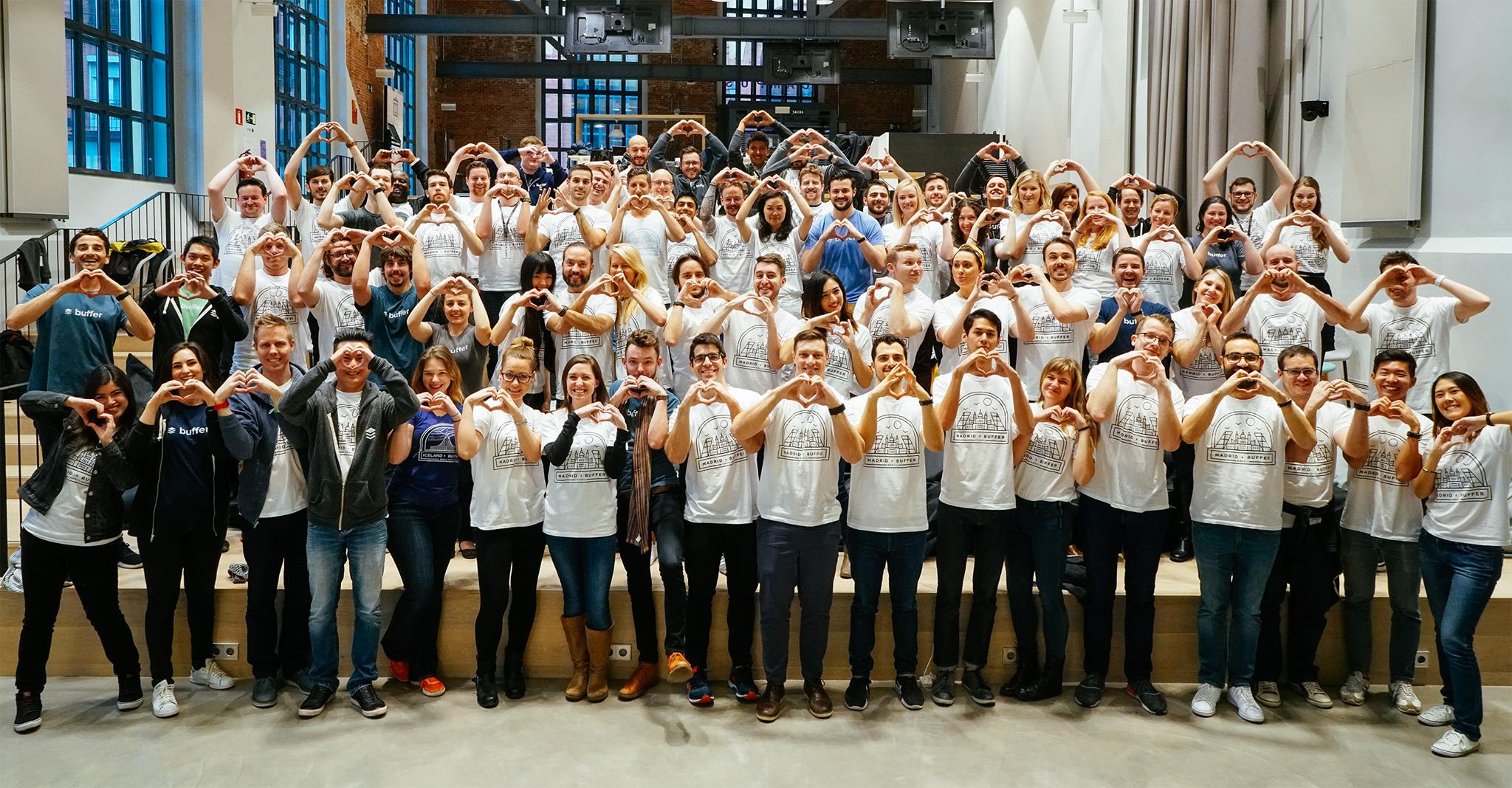
In Madrid we were lucky to work from Google’s awesome Campus Madrid location! Here are some video highlights:
Retreat #9: Singapore
April 2018
Teammates: 73

Singapore was our first APAC timezone retreat since Buffer was much, much smaller. A lot of us learned some great lessons about jetlag! We were lucky enough to stay at the W Sentosa and got extremely spoiled with delicious food and luxury digs.
Retreat 10: San Diego, California
April 2019
Teammates: 85
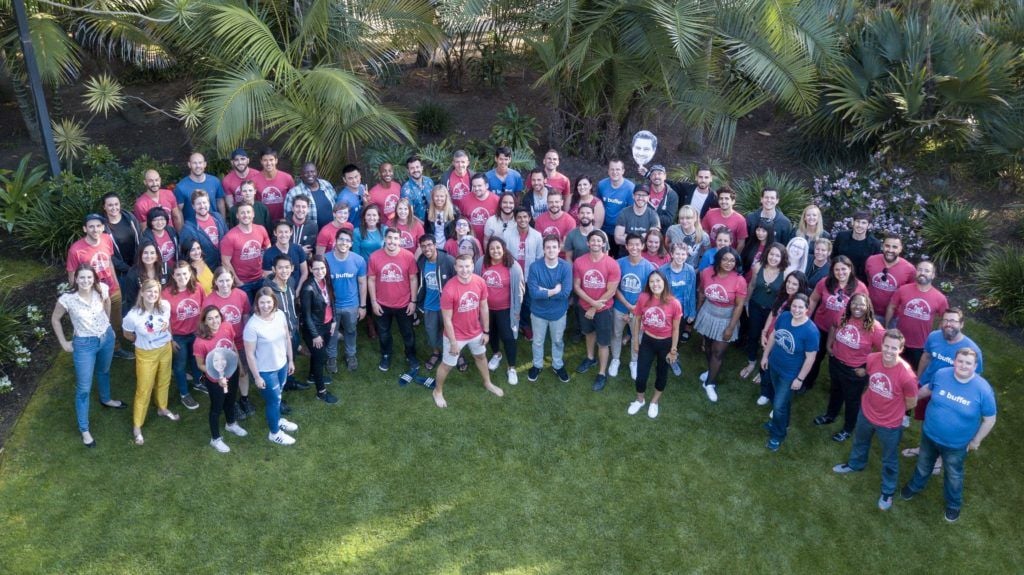
What we’ve changed over time
Many things have stayed the same about the retreats over time—it’s always a 9-day trip in which Buffer covers all the expenses—flights, accommodation, meals and fun activities.
We generally spend the core week, Monday through Friday, working together on a 9 a.m. to 5 p.m. (ish) schedule and enjoy some fun events during the weekend (and sometimes during the week).
But a few things have changed quite a lot as we’ve evolved and grown:
- Amount of work and play: This can vary on each retreat and often depends on our current philosophies and projects
- Inclusiveness and diversity: We’ve made progress on making sure there are fun activities on retreats for all types of team members, including those with different types of abilities and interests
- How they’re planned: We’ve moved from a top-down hierarchy to a flat, leaderless structure and then somewhat back again, and each change affected the way retreats are planned and enacted. Some retreats have been very “planned” while others much looser in format.
The future of retreats
By our next retreat, Buffer may have doubled in size. In the future, how and where we get together could look very different, especially if our team grows to 100 members or beyond.
In Reykjavik, we had a roundtable discussion about the future of retreats. We agreed that they’re a hugely valuable element of our journey in that they allow us to spend time together, see how each individual lives out the Buffer culture in his and her own way, and experience the world together.
But there are challenges of the retreats, too. They take quite a lot of time and energy to plan for the teammates that choose to be involved there, and they often don’t feel the best for our customers when our schedules keep us from getting back to them as soon as we normally would.
Additionally, for families with children they can create a financial and logistical strain. They’re potentially challenging for people with physical handicaps, or those afraid of flying.
Here are some of the potential changes we’ve discussed recently around retreats:
- Frequency: We’ve discussed changing the retreat schedule from every 5 months to every 7 months as we grow and it becomes more challenging to accomodate our whole team in one place.
- Families: Future Buffer retreats could include whole families, including children, and would likely change quite a bit as a result.
- Retreat variations: Buffer could also add mini-retreats and work meetups among those who work close together geographically or in the same areas on the team.
We’re excited to experiment and see how retreats grow and develop over the years. Meanwhile, you can take a look at the evolution of the Buffer retreat in photos over on our Facebook page.
If you’re part of a remote team or have ever take part in or planned a company retreat, we’d love to hear from you and get your advice! Share your thoughts and questions in the comments.
Try Buffer for free
180,000+ creators, small businesses, and marketers use Buffer to grow their audiences every month.
Related Articles

We’ve always had teammates who have side projects in addition to working at Buffer. Working on new projects, building, experimenting, and self-improvement are built into our DNA as a company. So it's quite common to be speaking with someone only to find out they own a small business outside of Buffer that started as a side project. We also have several published authors and many apps built by Buffer teammates. We believe this entrepreneurial spirit and creative drive not only enhances our indiv

Every year since 2016 we've closed Buffer for a week at the end of the year. It’s like a reset, except across the whole company.

In this article, the Buffer Content team shares exactly how and where we use AI in our work.